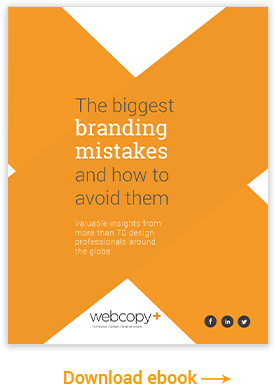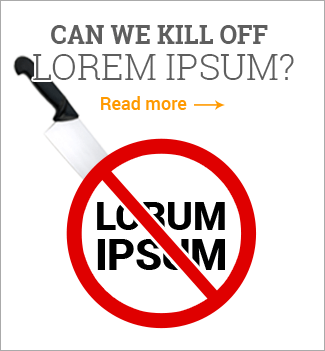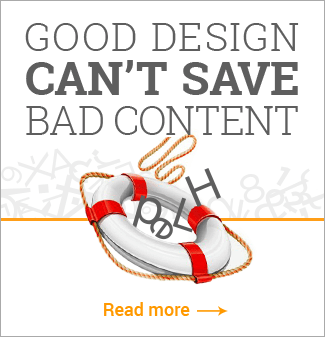
It’s the Web, right? So it’s supposed to be sticky. Fortunately, there are simple ways to ensure visitors “stick around” your website.
Even avoiding pricey add-ons such as corporate videos, your web copy alone — if done right — can make your website more attractive to users. Here’s how:
1. Inject Some Personality, but Watch the Humour
Speak directly to your visitors in a personal, authentic voice. Most web users don’t want to be entertained; instead, they’re looking for specific information. Your web copy should direct them with a few choice, friendly words.
Continue reading →

For more than a decade, sales strategists have been advising businesses to take their marketing online. Forward-looking companies have heeded this message.
However, many businesses still prefer traditional media such as TV, radio and newsprint. So while typical consumers might spend 25% of their media time surfing the Web, these companies might only be investing 5% or so of their marketing budgets on websites and other online promotions.
These businesses need to get with the times and accelerate their investments on the Internet, especially during the downturn. Here are a few good reasons why.
Posted on Apr 22 2009 1:36 pm by Web Copywriters
tags: Business and the Web Marketing
|
category: Business & marketing |
Leave a comment
Soovle, a customizable engine that lets you tap into Google, Yahoo!, Wikipedia, Answers.com, Ask.com, YouTube, and Amazon with efficiency and ease, is entering the mainstream.
Despite common beliefs, the suggestion site doesn’t actually crawl the Web. When you start typing a search term, Soovle immediately offers suggestions for related terms. When you want to hook up with Soovle’s suggestions, just click on the result and the innovative site will take you there.
It makes for a neat search tool, and is packed with features. Surf Soovle now!
Posted on Apr 22 2009 1:22 am by Web Copywriters
tags: Search Engines
|
category: Web world at large Website promotions |
Leave a comment
Your shiny new website copy is finally in place, and is starting to bring in business. Great!
But before you amortize your investment, consider how those carefully crafted words can work for your business in other places.
Repurposing your website marketing copy will:
- Reinforce your brand identity
- Establish consistent messaging
- Increase customer recognition
It will also give you more than your money’s worth.
Explore 10 ways to repurpose your website copy so it works overtime for your company, online and offline.
Posted on Apr 21 2009 4:06 pm by Web Copywriters
tags: Web Content Strategy
|
category: Business & marketing |
4 Comments
During a recent web writing class, I was surprised to learn several participants felt websites in general have only one main purpose: to sell products or services.
In the business realm, promoting products and services is common. However, there are many other types of websites, including:
- Personal or biographic websites, a.k.a. blogs
- News websites, which can complement newspapers
- Informational websites, designed to share information on specific topics or hobbies
- Instructional websites, ready to educate you, often cost-effectively and around the clock
- Community websites, or social websites, Web 2.0 sites…call them what you will
- And entertainment websites, made to distract or amuse you
If you’re looking to launch a new website, be sure to answer a few key questions before you employ a web designer, web writer or any one else. It’ll save you much money and time, and help you succeed.
Posted on Apr 20 2009 1:50 pm by Web Copywriters
tags: Marketing Web Content Strategy
|
category: Web world at large |
Leave a comment
Typesett offers readers a simple, clever feature that compares websites of rival companies.
When you review the website comparisons, notice the ones that have more impact and promote better usability are amazingly clean. The web designers, developers and copywriters made the effort and took the time to define and effectively convey key messages. They strived for a simple website, and they succeeded.
It brings to mind the words of French aviator and writer Antoine de Saint Exupery: “A designer knows he has achieved perfection not when there is nothing left to add, but when there is nothing left to take away.”
Kudos to Apple and Gibson in particular. They made every word and image count. Adidas, Fender and Microsoft should take note.
See Comparing websites of rival companies.
With Internet-connected television heating up, Yahoo!, Intel, and Samsung are taking a page from Apple’s design book as they aim to bring Internet to a television near you.
A key element entails widgets; small software applications that offer tailored, pared-down versions of sites found online. Using the regular TV remote and clicking at a normal-looking TV, you can access the Web via a wireless or broadband connection.
Just four widgets are currently available: Yahoo’s news; weather; finance; and Flickr photo-sharing. Future partners include MySpace, Netflix, Amazon.com, Joost and Twitter.
While the initial TV sets are expensive — $1,800 and up for Samsung’s versions — prices are expected to fall sharply, and more firms (including cable companies and pay-TV operators) may soon jump in.
Read: Business Week’s Can Widgets Save the Television Industry?
Posted on Apr 17 2009 1:01 am by Web Copywriters
|
category: Business & marketing Web world at large |
Leave a comment
Too often, businesses don’t get the website they require. Webcopyplus recently spoke to Tamara Brooks of Vancouver’s Syntric Design about how to get the most from your web designer and attain a website that will serve you well.
WCP: What are the first steps to creating a well-managed web design project?
TB: Creativity is subjective but the process should not be. A professional web design firm will desire a strong briefing document, and this is the groundwork of any successful project. In addition, be sure that you have the decision maker at your company interacting with the account representative at the design firm.
WCP: Can you elaborate on creative briefs?
TB: It’s a complex structure, a briefing document clearly articulates your company’s design needs. The process for developing this understanding precedes the web design stage and is one of the most important factors in the outcome of a website. It establishes a mutual understanding of the scope of the work, the project objectives and specific deliverables. It defines the tasks to be completed based on the agreed on estimate or proposal. If the website is complex and includes a large budget, this design brief should be agreed on and signed by both the design firm and the client, and should also be reviewed at a meeting with all stakeholders prior to project commencement.
Continue reading →
Posted on Apr 16 2009 12:02 am by Web Copywriters
tags: Web Design Working in the Web
|
category: Web world at large |
3 Comments
The BBC reports Google sees voice search as a major opportunity to generate presence on the mobile web.
Vic Gundotra, Google’s Vice-President of Engineering, made the comments during a wide-ranging discussion at a recent Web 2.0 Expo in San Francisco.
“We believe voice search is a new form of search and that it is core to our business,” he stated.
Read Google sees voice search as core.







